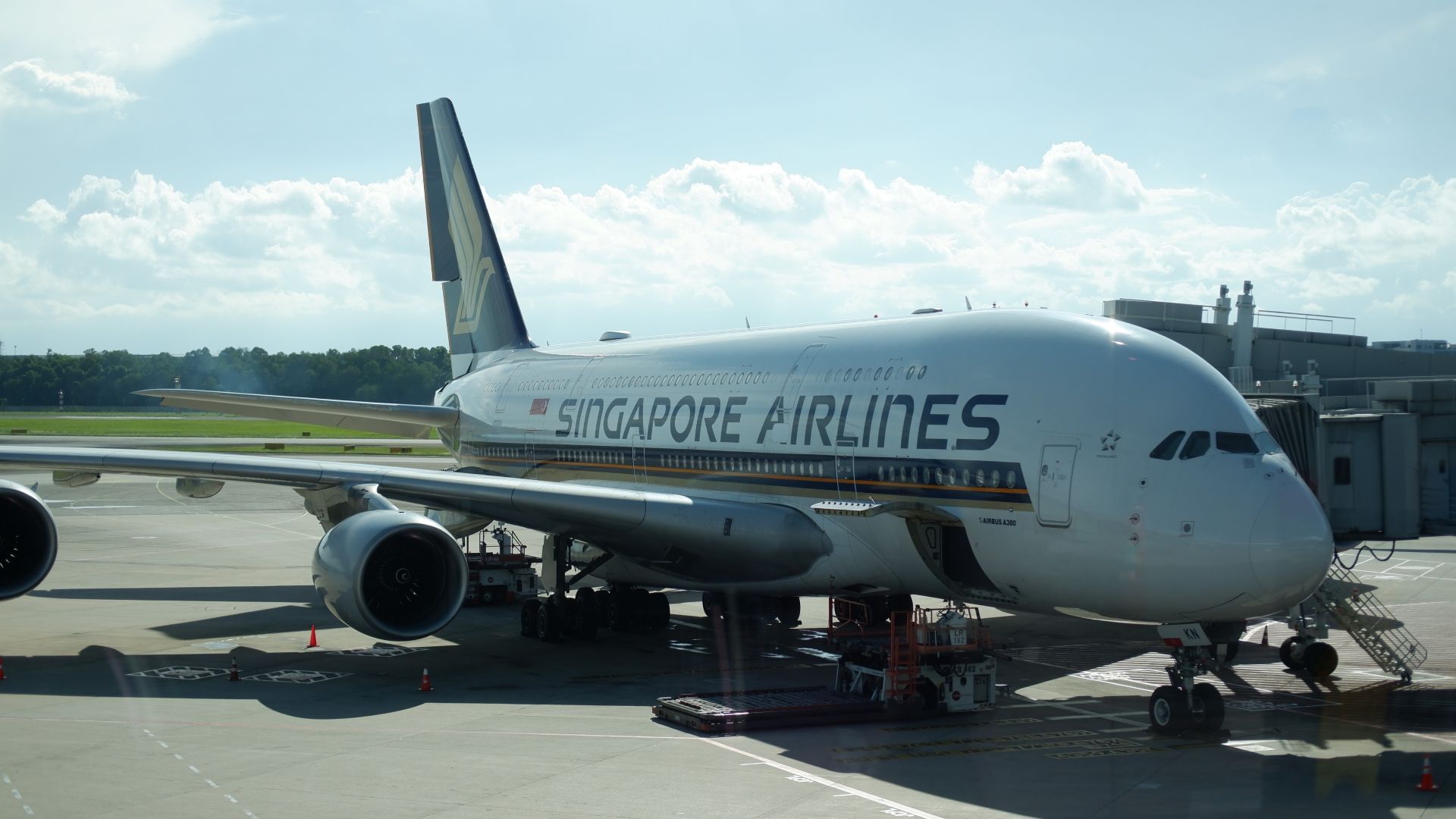World
Exploring the Airbus A380: Unveiling the World’s Largest Airliner

When the Airbus A380 took to the skies in March 2005, it was celebrated as a revolutionary advancement in long-haul air travel. As the world’s first full-length double-deck passenger aircraft, the A380 aimed to transport more passengers comfortably than any previous model. Its remarkable size and technical innovation garnered worldwide attention, positioning Airbus as a leader in a market increasingly focused on efficiency and capacity.
The A380 was designed with a mission to alleviate congestion at major airports, such as London Heathrow, where limited slots necessitated maximizing passenger capacity per flight. Measuring 239 feet (72.72 meters) in length and boasting a wingspan of 262 feet (79.75 meters), the aircraft eclipsed the previous long-haul market leader, the Boeing 747-400. This design allowed airlines to configure cabins with over 500 seats in standard layouts and up to 850 seats in an all-economy configuration.
While the A380 program faced challenges, several airlines continue to operate the aircraft successfully. Emirates stands out as the leading operator, while British Airways has explored acquiring used A380s. Qantas has announced plans to keep the A380 in service until the 2030s, and several airlines have recommenced A380 flights following the COVID-19 pandemic.
Innovative Cockpit and Pilot Experience
Airbus placed significant emphasis on the A380’s cockpit, merging decades of design philosophy with modern technology. The flight deck incorporates familiar elements for pilots transitioning from other Airbus models, such as side-sticks and overhead panels. Enhancements include larger displays and advanced tools to manage the demands of operating the world’s largest passenger aircraft.
The A380 features a total of 10 displays, including two that serve as an integrated Electronic Flight Bag (EFB). This overhaul of the cockpit’s software and controls reflects Airbus’s commitment to innovation. Many design elements from the A380’s cockpit have influenced subsequent models, including the Airbus A350.
Cabin Design and Passenger Comfort
The A380 boasts the widest cabin of any airliner, measuring 21 feet 7 inches (6.58 meters). While some might argue that this space could encourage overcrowding, the economy class on the A380, configured in a 3-4-3 layout, offers one of the most spacious experiences available. The aircraft’s ceiling height is greater than that of any other commercial airliner, contributing to a less claustrophobic environment.
The A380’s cabin altitude is typically set to approximately 6,000 feet during flights, comparable to the newer Boeing 787 and Airbus A350. This altitude, combined with advanced insulation reducing noise levels, creates a more comfortable atmosphere for passengers on ultra-long-haul flights.
The upper deck of the A380 is a defining feature, extending the full length of the aircraft. Unlike the Boeing 747, which has a partial upper deck, the A380 offers airlines flexibility to create premium layouts. Business class is commonly situated on the upper deck, with airlines like Emirates configuring their A380s to include 76 business class seats in this area.
Unique to the A380’s design is the forward section of the upper deck, which cannot accommodate seats due to the fuselage structure. Emirates has creatively utilized this space by installing first-class showers, while other airlines, such as Qantas and Korean Air, have added lounges.
Airlines have leveraged the A380’s vast interior to innovate passenger amenities. Emirates, for instance, has set a high standard with its upper-deck bar and lounge, allowing premium passengers a space to socialize mid-flight. Other carriers, including Qatar Airways and Etihad Airways, have followed suit, enhancing the A380’s appeal with relaxation zones.
Despite its many advantages, the A380’s design prioritized passenger transport, which may have contributed to its commercial challenges. While the aircraft’s impressive dimensions are notable, its length is shorter than that of the Boeing 777-300ER and Boeing 747-8, which limits its cargo capacity. This design limitation affected the A380’s profitability on certain routes, particularly those that rely heavily on cargo revenue.
As the aviation industry continues to evolve, the Airbus A380 remains a symbol of ambition and innovation. Its blend of space, comfort, and cutting-edge technology has left an indelible mark on long-distance air travel, shaping the future of the industry.
-

 Health3 months ago
Health3 months agoNeurologist Warns Excessive Use of Supplements Can Harm Brain
-

 Health3 months ago
Health3 months agoFiona Phillips’ Husband Shares Heartfelt Update on Her Alzheimer’s Journey
-

 Science1 month ago
Science1 month agoBrian Cox Addresses Claims of Alien Probe in 3I/ATLAS Discovery
-

 Science1 month ago
Science1 month agoNASA Investigates Unusual Comet 3I/ATLAS; New Findings Emerge
-

 Science4 weeks ago
Science4 weeks agoScientists Examine 3I/ATLAS: Alien Artifact or Cosmic Oddity?
-

 Entertainment4 months ago
Entertainment4 months agoKerry Katona Discusses Future Baby Plans and Brian McFadden’s Wedding
-

 Science4 weeks ago
Science4 weeks agoNASA Investigates Speedy Object 3I/ATLAS, Sparking Speculation
-

 Entertainment4 months ago
Entertainment4 months agoEmmerdale Faces Tension as Dylan and April’s Lives Hang in the Balance
-

 World3 months ago
World3 months agoCole Palmer’s Cryptic Message to Kobbie Mainoo Following Loan Talks
-

 Science4 weeks ago
Science4 weeks agoNASA Scientists Explore Origins of 3I/ATLAS, a Fast-Moving Visitor
-

 Entertainment4 months ago
Entertainment4 months agoLove Island Star Toni Laite’s Mother Expresses Disappointment Over Coupling Decision
-

 Entertainment3 months ago
Entertainment3 months agoMajor Cast Changes at Coronation Street: Exits and Returns in 2025









